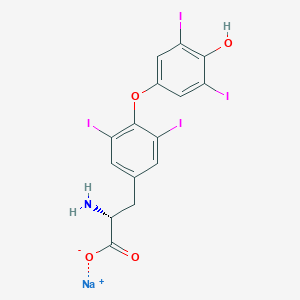The world's first high-quality mountain heron genome map was successfully assembled
-
Last Update: 2021-03-06
-
Source: Internet
-
Author: User
Search more information of high quality chemicals, good prices and reliable suppliers, visit
www.echemi.com
, is a well-known fragrance tree in the south of China, its fruit has aroma, non-toxic, can treat acute pneumonia, anti-viral anti-bacterial anti-inflammatory effect. Mountain heron essential oil is also the raw material for high-end cosmetics violet ketones.
April 3, Nature -Newsletter published online the important results of Wang Yangdong, a researcher at the Subtropical Forestry Research Institute of the China Academy of Forestry Sciences. The team successfully assembled the world's first chromosomal-level, high-quality mountain heron genome map, which sheds light on the evolution of camphor species and its essential oil synthesis molecular mechanisms.China's mountain heron cultivation area of 216,000 mu, the annual output of essential oil 1401 million tons, for the world's largest producer and exporter, the annual economic value of about 2 billion yuan.
, as one of the representative species of Magnolia branch Changmu Changke, the content of fresh peel essential oils reached 4% to 7%, and the content of monocrystic compounds was as high as 98%. In fact, the camphor plants to which the heron belongs are generally rich in monoamcin compounds, namely camphor, eucalyptus oil alcohol, lemon aldehyde and so on. Changke plant is an important economic and ecological tree species in the south of China, there are about 20 genus, 423 species, in the use of wood, medicinal, spices, medicine have important economic value.
"At present, the biosynthetic mechanism of monocycline compounds, the main component of camphor fruit essential oils and essential oils, is not clear, which restricts the precise breeding of camphor plants. Qian Qian, a member of the Chinese Academy of Sciences, told the China Science Daily.
Yangdong, author of the paper, said that the small, flower-ordered, bisexual and monogactic flowers make it difficult to study their morphological evolution and evolutionary position, and the synthesis of key compounds of Changke's special fragrance is not clear. Therefore, it is instructive to explore the evolution of camphor, the molecular evidence of flower morphological evolution and the genetic basis of special scents from the genomic level to reveal the biological characteristics, application promotion and genetic breeding of camphor plants.October 2016, the Wang Yangdong team launched the Mountain Heron Genome Sequencing Project. After more than 3 years of efforts, the project was successfully completed, resulting in a genome of 1.37G in size and 607.34kb in contig N50. Using Hi-C technology, they further anchored the genome to 24 chromosomes, with an anchoring rate of 94.56 percent, to obtain a high-quality map of the mountain heron genome.“ Based on the map of the heron genome and the representative hetology information of the heron genomes and the genus changke, we find that incomplete genealogy sub-selection plays an important role in the differentiation of magnolias and single-parent leaf plants. In general, the relationship between species can be restored by one or more genes, Wang Yangdong explained in an interview with China Science Daily. But when new species form extremely quickly, allied genes from ancestors are randomly distributed among differentiated species. This phenomenon of incomplete genealogy sub-selecting poses a great obstacle to the evolution of species systems built through gene trees.
the systematic development of magnolia plants has always been a hot issue in the study of the evolution of plants. Published magnolia genomes have obtained inconsistent results, with magnolias likely to be sister to single gemal leaves or to single or twin leaves, respectively. Our findings provide new evidence for Changke's complex system development relationship. Wang Yangdong said.
heron belongs to magnolia plants. Wang Yangdong said: "Based on systematic developmental analysis of the genome data of mountain herons and other bedding plants, our results support the sister group of magnolia and gemal leaf plants, which originate after the differentiation of single gemal leaves." "However, systematic developmental heterogeneity assessment based on ancestry found that different single-copy genes showed different topology. This also shows that magnolia system development location, not only by adding data alone can be completely determined, but also hidden behind complex species formation events, such as incomplete genealogy selection.
" results advance the exploration of the location of magnolia systems, elevating their system development problems to their origin and evolution. Wang Yangdong said."We identified two genome replication events (WGD) in the heron genome. The ancient one occurred shortly before magnolia and camphor splits, and the younger one occurred before Changke differentiation. Chen Yisan, the paper's first author and an associate researcher at Yalin Institute, told China Science Daily.
Chen further explained that some species in Changke also have two genome replication events, but do not share Changke's recent genome replication events, but these groups are unique to them.
interesting thing is that genomic replication events are not identified in the rootless vines of camphor plants, and the high base replacement rate caused by its particular habits is a potential cause. The Changmu species experienced rapid radiation about 3 million years ago, consistent with the timing of genome replication events, Chen said. This suggests that genome replication events are driving species differentiation in Changmu.
ASTRAL traceability analysis of different single-copy genes also suggests that complex evolutionary events have occurred in the respective branches of the Genus Sai Nan, the Genus Laurel, the Genus Of Sai Nan, the Genus Of Laurel and the Genus Avocado, resulting in their variable system locations, and the existence of mesh evolution or incomplete genealogical selection events to be further studied.
the same time, whether the genome replication events shared by Changmu are composed of multiple genome replication events independent of each branch needs further study.addition, the team revealed the system development framework within Changke through transcription group data represented by different branches within Changke. The results showed that rootless vine was the earliest differentiated group of Changke, while the differentiation events of the common ancestors of the thick shell cinnamon genus, Qiongnan genus and lemon fruit camphor genus were slightly later than rootless vine. high-quality genome map, Wang Yangdong's team identified several important genes.
the morphological characteristics of changke flower sequence is an important basis for Changke classification. Usually, changke flower sequence has conical flower sequence, spike flower sequence, total flower sequence, umbrella flower sequence. Based on transcriptional group data from the heron genome and flower organs of 28 species in the 13 genus Changke, they found that a highly conservative system for the development of flower sequence systems built by genes
involved in flower sequence morphology and changke species, Chen said. Evolutionary correspondence reveals the evolution of Changke
from spike-shaped
, spike-shaped cone
to umbrella-shaped cones
, false umbrella-shaped
, to umbrella-shaped
evolution of the law.
so, where does the unique fragrance of mountain herons and camphor tree species come from? Based on a high-quality genome map, the team analyzed the molecular mechanisms of key compound formation.
aromatol, eucalyptus oil alcohol, lemon aldehyde, α/βene, ene, fennel and other monoazole compounds are the main components of camphor essential oils, such as mountain heron essential oil monotin compounds up to 98%. Monoxacin determines the quality of essential oils and has antiviral, anti-inflammatory and sterilization effects.
, they found significant expansion of monoenzyme Mono-TPS in Changke through comparative genomic analysis. Monoenzyme mainly catalyzes the synthesis of monoazole compounds.
In order to further excavate the key genes that regulate the synthesis of major monomonas compounds, they identified the key enzyme gene
that regulates the synthesis of the main compounds of Changke and Yamazal heron essential oils by using iso-source and heterogeneous instantaneous expression, as well as in-somatic enzyme
. Qian qian pre-evaluation, Wang Yangdong team to the mountain herons as the research object of the latest results, revealed the evolution of the monoazole gene family in Changke, effectively promoted the diversity and specificity of camphor plant monotony compounds, to reveal the biological characteristics of camphor plants, guide the research of Camphor genetic breeding, especially to accelerate the molecular breeding process has a guiding role.
Wang Yangdong told reporters that the next step, based on genomic data, combined with large groups, they will carry out accurate prediction of molecular markers related to the quality and yield of mountain herons;
This article is an English version of an article which is originally in the Chinese language on echemi.com and is provided for information purposes only.
This website makes no representation or warranty of any kind, either expressed or implied, as to the accuracy, completeness ownership or reliability of
the article or any translations thereof. If you have any concerns or complaints relating to the article, please send an email, providing a detailed
description of the concern or complaint, to
service@echemi.com. A staff member will contact you within 5 working days. Once verified, infringing content
will be removed immediately.







